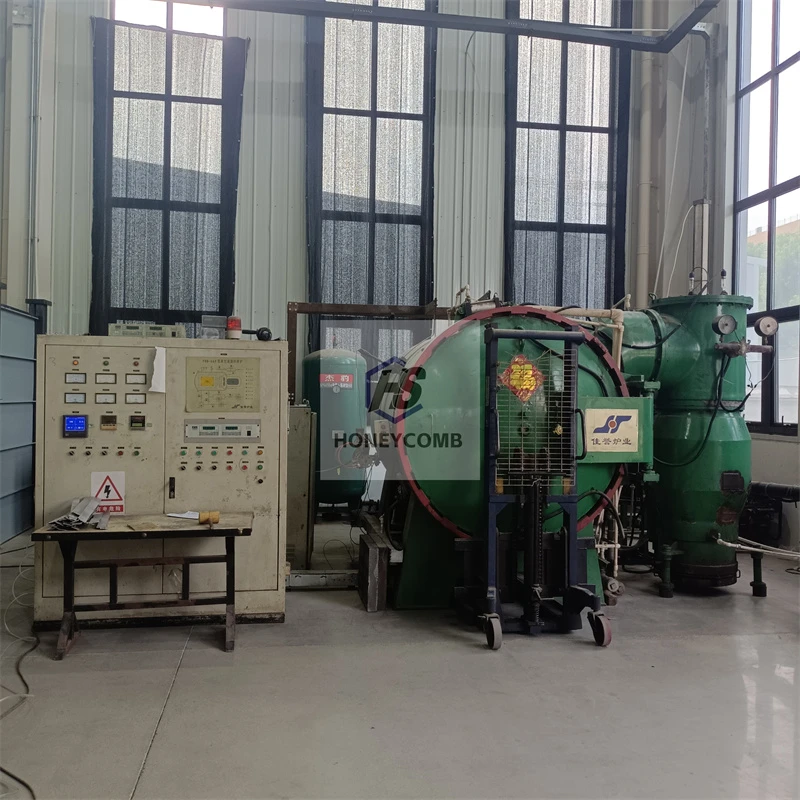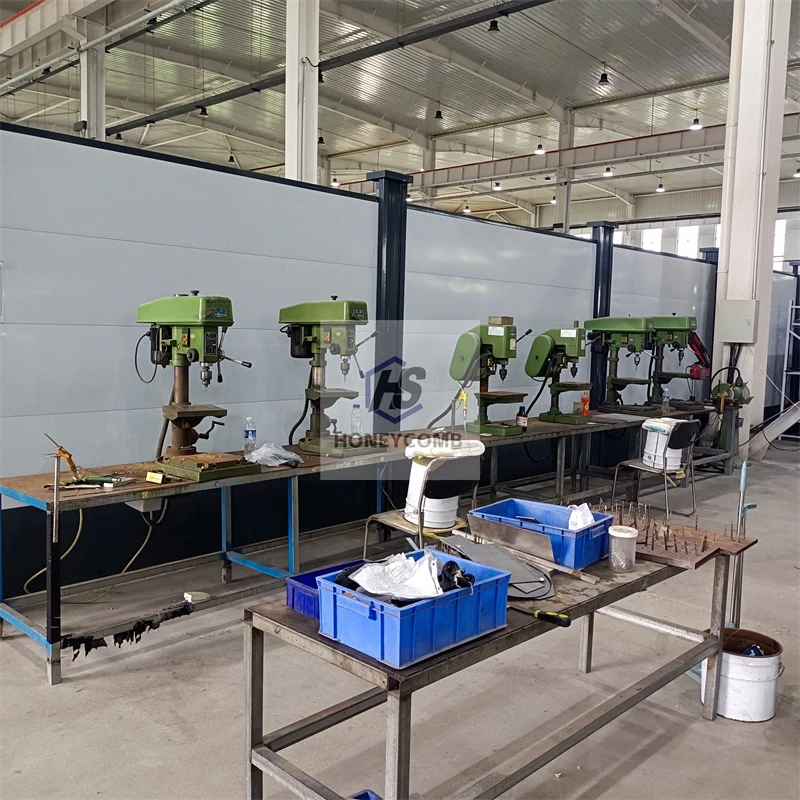
- Afrikaans
- Albanian
- Amharic
- Arabic
- Armenian
- Azerbaijani
- Basque
- Belarusian
- Bengali
- Bosnian
- Bulgarian
- Catalan
- Cebuano
- China
- China (Taiwan)
- Corsican
- Croatian
- Czech
- Danish
- Dutch
- English
- Esperanto
- Estonian
- Finnish
- French
- Frisian
- Galician
- Georgian
- German
- Greek
- Gujarati
- Haitian Creole
- hausa
- hawaiian
- Hebrew
- Hindi
- Miao
- Indonesian
- Italian
- Japanese
- Javanese
- Malay
- Persian
- Portuguese
- Punjabi
- Russian
- Spanish
- Swahili
- Telugu
- Vietnamese

High-Quality Honeycomb Seal Supplier for Gas Turbines Affordable Industrial Honeycomb Seals
- Introduction to Honeycomb Seal: Structure, Function, and Advantages
- Technical Superiority and Performance Data of Modern Honeycomb Seals
- Comparative Analysis: Leading Industrial Honeycomb Seal Suppliers
- Affordability and Value: Locating a Cheap Honeycomb Seal Supplier Without Sacrificing Quality
- Customization Strategies for Honeycomb Seal Applications in Gas Turbines
- Real-World Application Cases: Performance Data and Testimonials
- Conclusion: Choosing the Right Honeycomb Seal Supplier for Long-Term Success

(honeycomb seal)
Introduction to Honeycomb Seal: Structure, Function, and Advantages
A honeycomb seal
is an advanced labyrinth-type sealing technology renowned for its unique hexagonal structure, resembling the natural geometric pattern found in beehives. This core structure delivers high performance for various rotating machinery, particularly in sectors like aerospace, energy, and industrial equipment. The intricate honeycomb pattern enables precise control of fluid leakage, reduces energy loss, and promotes operational efficiency. Distinct from conventional solid seals, honeycomb seals use a metallic or composite honeycomb strip affixed to the casing or stationary part, with a small clearance maintained between the seal and the rotating shaft or blade. This configuration minimizes rubbing, improves rotor stability, and greatly extends service life.
The main advantages of honeycomb seals include exceptional leakage reduction, excellent tolerance to rotor-stator misalignment, and increased ability to withstand pressure fluctuations and thermal expansion. Their open-cell structure disrupts leakage flow paths, providing significant energy dissipation while keeping wear and tear on rotating components to a minimum. In addition, honeycomb seals support the demanding requirements of gas turbines, compressors, and turbo machinery by enabling higher pressure differentials and operating temperatures. These technological benefits make honeycomb seals a crucial choice for performance-driven industries.
Technical Superiority and Performance Data of Modern Honeycomb Seals
Modern honeycomb seals outperform traditional labyrinth and brush seals thanks to advanced engineering, high-precision manufacturing, and material innovations. The open-cell honeycomb foil acts as an effective barrier by disrupting flow vortices and reducing pressure gradients within the seal clearance. This results in significantly lower leakage rates and heat generation during high-speed operation.
According to experimental studies and test rig data, honeycomb seals exhibit leakage reductions of up to 30–60% compared to standard labyrinth seals at comparable clearances. In high-pressure environments typical of gas turbine engines, sealed gas velocities can be reduced by 20–40%, optimizing thermal efficiency and reducing system cost per megawatt. Furthermore, metal honeycomb cells are highly resistant to fretting, oxidation, and erosion—even during startup and shutdown cycles that present severe thermal shocks and vibration loads.
Some leading producers now guarantee product lifespans exceeding 75,000 operational hours and temperatures surpassing 650°C (1200°F) without significant structural deformation. Static and dynamic testing confirms stable behavior at tip speeds above 350 m/s. This performance secures honeycomb seals' prominent role within power plants, aviation, petrochemical, and marine propulsion applications.
Comparative Analysis: Leading Industrial Honeycomb Seal Suppliers
Selecting an industrial honeycomb seal supplier requires evaluating crucial product characteristics, manufacturing standards, cost structures, and technical support services. Below, key attributes of top suppliers are compared, focusing on product durability, cost efficiency, customization support, and global presence.
| Supplier | Material Range | Max Operation Temp (°C) | Leakage Reduction (%) | Customization | Avg. Lead Time (weeks) | Certifications |
|---|---|---|---|---|---|---|
| SealTech Solutions | Nickel, Stainless Steel, Hastelloy | 680 | 50–60 | Advanced (CAD/CAM supported) | 8 | ISO 9001, AS9100 |
| HoneyPro Engineering | Alloys, Titanium, Inconel | 700 | 55–57 | Full Custom (co-design) | 6 | ASME, ISO 14001 |
| ValueSeal Manufacturing | Stainless Steel | 590 | 47–50 | Standard/Custom (by request) | 10 | ISO 9001 |
| PureComb Tech | Inconel, Cobalt alloys | 650 | 52–55 | Custom (Rapid prototyping) | 5 | DIN ISO 9100 |
The comparative data shows that suppliers with advanced material portfolios and rapid customization capabilities can offer superior performance and shorter lead times, directly translating to reduced operational costs and faster deployment. Certifications such as AS9100 and ASME further indicate robust quality assurance systems—critical for safety-sensitive applications.
Affordability and Value: Locating a Cheap Honeycomb Seal Supplier Without Sacrificing Quality
Cost-effectiveness is an important factor in sourcing honeycomb seals, especially for bulk buyers and market sectors with strict budget constraints. Yet, the emphasis on affordability should not compromise crucial parameters like fatigue strength, leakage control, or long-term durability. Reliable cheap honeycomb seal suppliers employ lean manufacturing processes, harness economies of scale, and utilize advanced supply chain strategies to deliver competitive pricing.
A successful approach to finding affordable yet high-quality honeycomb seals involves rigorous supplier vetting, emphasizing transparent pricing structures, and requesting sample batch testing to validate claims. Many leading suppliers offer tiered pricing models, quantity-based discounts, and performance-to-cost analysis for each configuration. For example, batch orders of 100 units or more typically yield per-unit savings of 15–25% in the industrial market.
It is also recommended to examine after-sales service options, including technical consultation, return/replacement policies, and maintenance support. Thorough contract review and a clear communication channel between client and supplier further reduce risk and ensure a strong return on investment.
Customization Strategies for Honeycomb Seal Applications in Gas Turbines
Gas turbines demand sealing solutions tailored to fit unique rotor geometries, pressure regimes, and high-temperature environments. Customization begins at the material selection stage, where alloys like Inconel, Hastelloy, or titanium are matched to cycle conditions for optimal lifespan and resistance to corrosion or oxidation.
Modern manufacturing processes—such as laser cutting, precision welding, and computer-aided design—enable the fabrication of honeycomb seals with bespoke cell diameters, strip thicknesses, arc profiles, and clearance tolerances. This level of configuration ensures that the seal fits the turbine casing perfectly, maintains minimum clearance under thermal load, and remains structurally reliable under transient conditions.
Advanced suppliers offer co-design services where engineers from both the customer and supplier coordinate on optimizing the honeycomb structure and anchoring methods. Dynamic simulation, including computational fluid dynamics (CFD) and finite element analysis (FEA), play central roles in predicting deformation, heat distribution, and vibration response prior to production.
CNC-machined prototypes are tested in high-speed rigs, and adjustments are made in an iterative loop until all performance specifications are achieved. This collaborative process not only accelerates time-to-market but also ensures compliance with international quality and safety standards.
Real-World Application Cases: Performance Data and Testimonials
The efficacy of honeycomb seal technology is illustrated by case studies across several industries. In 2023, a 400 MW combined-cycle gas turbine plant upgraded from traditional step labyrinth seals to customized honeycomb seals. The operation reported a 42% reduction in sealing gas leakage, a 9% reduction in turbine unplanned downtime over 18 months, and operational fuel savings translating to annual cost reductions of nearly $390,000 USD.
In another instance, a leading marine propulsion contractor integrated honeycomb seal solutions for its fleet’s turbochargers. The switch resulted in improved sealing efficiency and greater tolerance to shaft misalignments without compromising durability during harsh sea conditions. Long-term reliability was verified after more than 80,000 hours of continuous operation, with no catastrophic seal failures reported and maintenance intervals extended by 15%.
Testimonials from plant managers and OEM engineers repeatedly cite the high ROI and significant gains in equipment reliability. One expert from a power utility commented: "By integrating modern honeycomb seals, we strengthened our competitive edges in fuel efficiency, system uptime, and emission reduction." These empirical outcomes highlight the real-world value of high-quality, engineered honeycomb seal products.
Conclusion: Choosing the Right Honeycomb Seal Supplier for Long-Term Success
In this dynamic landscape, selecting the ideal honeycomb seal gas turbine partner or industrial honeycomb seal supplier can define long-term operational success. By prioritizing technical innovation, quality assurance, and tailored engineering support, businesses maximize the lifespan and efficiency of critical rotating equipment.
When evaluating suppliers, consider their ability to provide data-driven leakage guarantees, responsive customization capabilities, proven field results, and strong certifications. A supplier’s investment in R&D, rapid prototyping, and lifecycle management services should influence your decision, as these factors drive long-term savings and equipment uptime.
Ultimately, a strategic partnership with a reliable honeycomb seal provider enables future-ready upgrades, regulatory compliance, and maximized yield throughout the operation lifecycle. Your investment in a world-class sealing solution today is the key to unlocking tomorrow’s competitive advantage.

(honeycomb seal)
FAQS on honeycomb seal
Q: What is a honeycomb seal?
A: A honeycomb seal is a type of labyrinth seal that features a honeycomb-patterned structure. It is designed to minimize leakage in high-temperature and high-pressure environments. Honeycomb seals are commonly used in gas turbines and other rotating machinery.Q: How do I find an industrial honeycomb seal supplier?
A: You can search online for reputable industrial honeycomb seal suppliers or check engineering supply directories. Look for suppliers with proven experience and positive customer reviews. Request quotes and technical support to ensure they meet your specification needs.Q: Are there cheap honeycomb seal suppliers available?
A: Yes, there are suppliers offering affordable honeycomb seals for various applications. However, it's important to balance price with quality and performance requirements. Always verify the supplier's credentials and product specifications before purchasing.Q: Why are honeycomb seals used in gas turbines?
A: Honeycomb seals are used in gas turbines to reduce leakage, improve efficiency, and withstand extreme operational conditions. Their robust design helps facilitate longer service life and lower maintenance requirements. This makes them ideal for demanding turbine environments.Q: What factors should I consider when selecting a honeycomb seal supplier?
A: Key factors include product quality, price, delivery time, and supplier expertise. Ask about their experience with specific applications, such as honeycomb seals for gas turbines. Ensure they can provide technical support and meet your industrial standards.Products categories
-
Why Vented Aluminum Honeycomb Is Leading the Way in Shielding and Ventilation SolutionsNewsJul.18,2025
-
Why Stainless Steel Honeycomb Panel is the Ultimate Choice for High-Tech Shielding and ProtectionNewsJul.18,2025
-
Why Honeycomb Strips Are Revolutionizing High-Speed Sealing SolutionsNewsJul.18,2025
-
Shielded Glass Innovation Powers the Future of Electromagnetic ProtectionNewsJul.18,2025
-
Precision Starts Here: Revolutionizing Airflow Control with Honeycomb Wind Tunnel SolutionsNewsJul.18,2025
-
Elevate Industrial Performance with Precision-Engineered Steel Honeycomb Core SolutionsNewsJul.18,2025
-
Vented Aluminum Honeycomb: A Smart Shield for Airflow and EMI ControlNewsJul.11,2025















